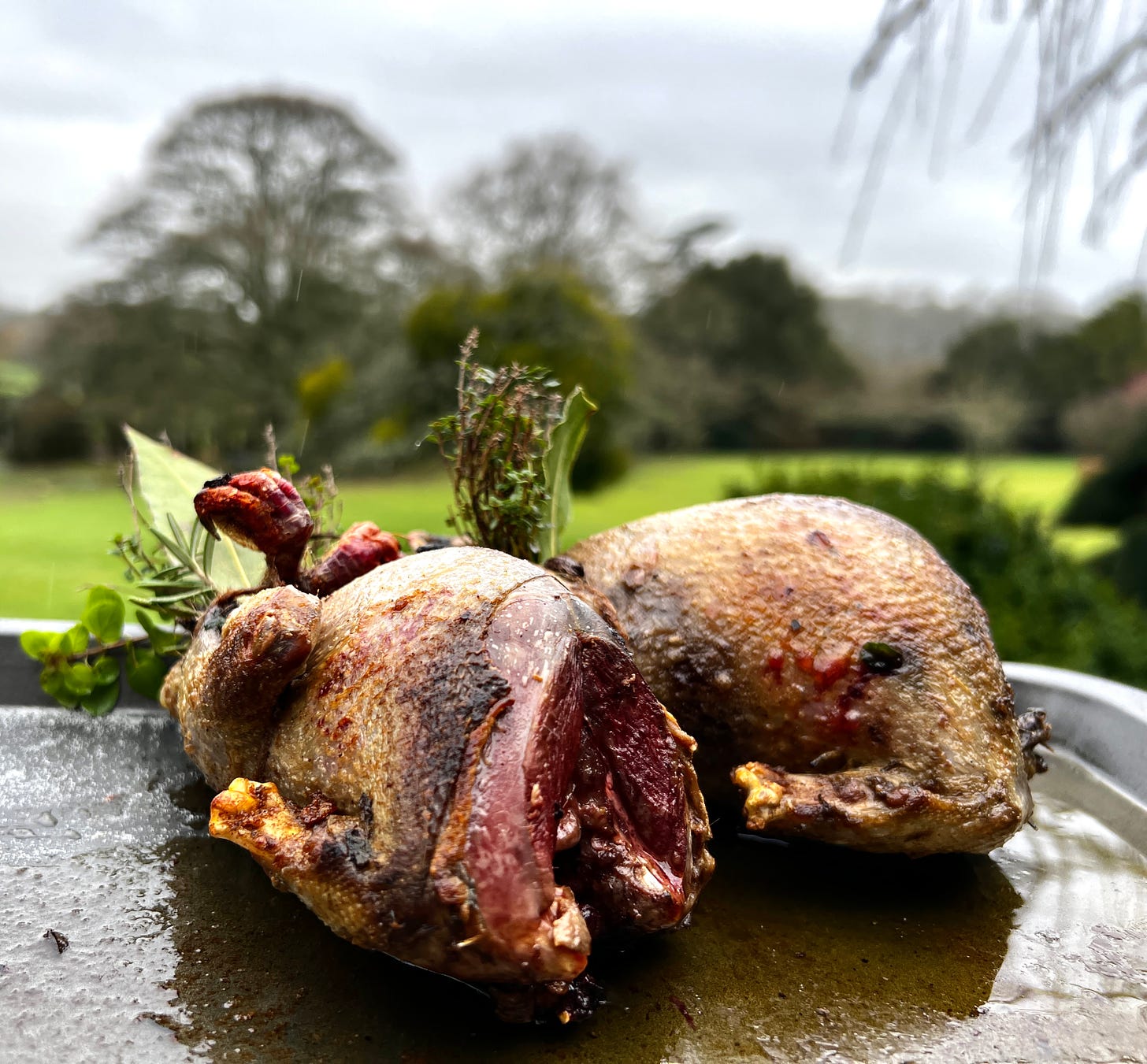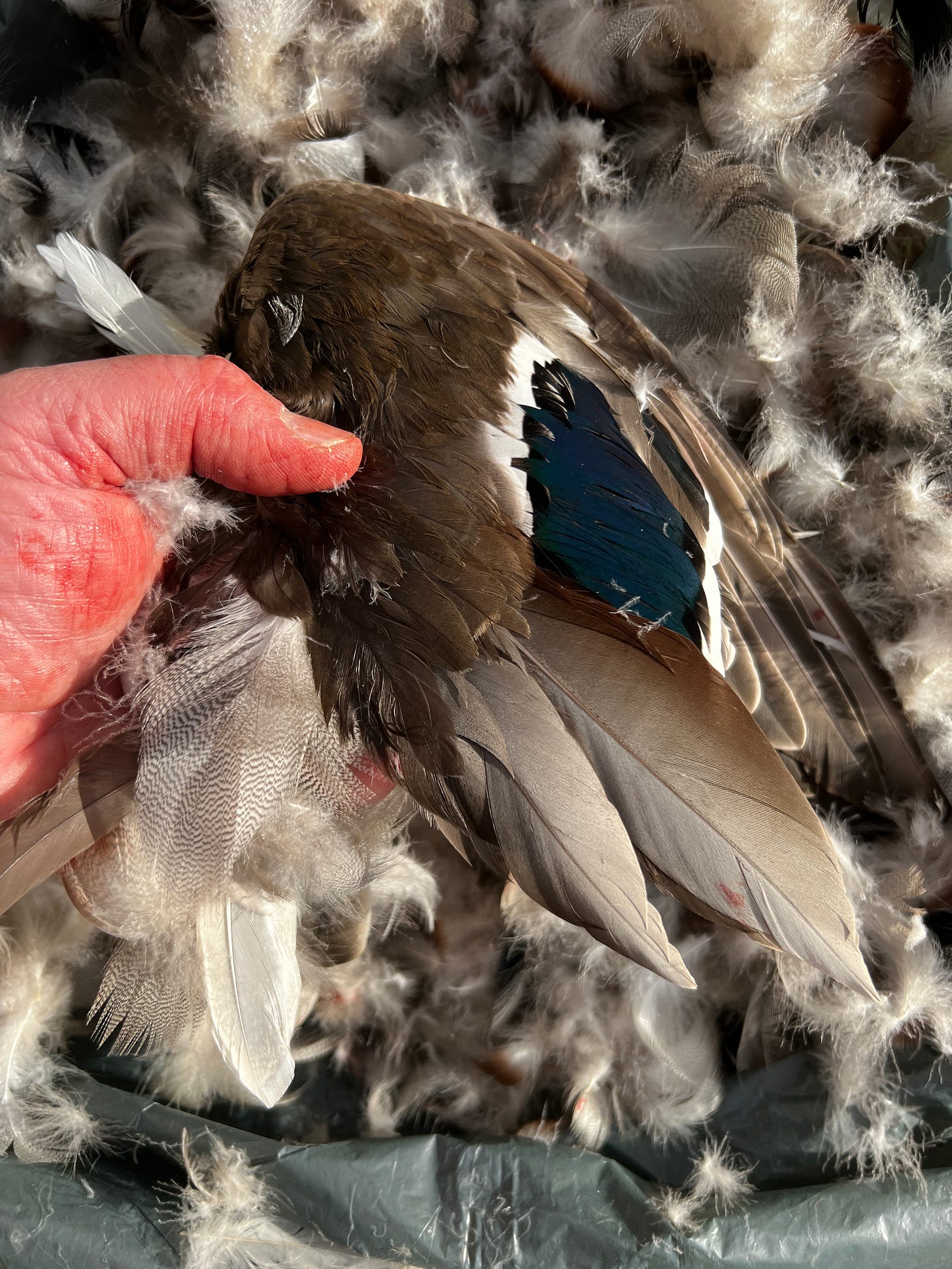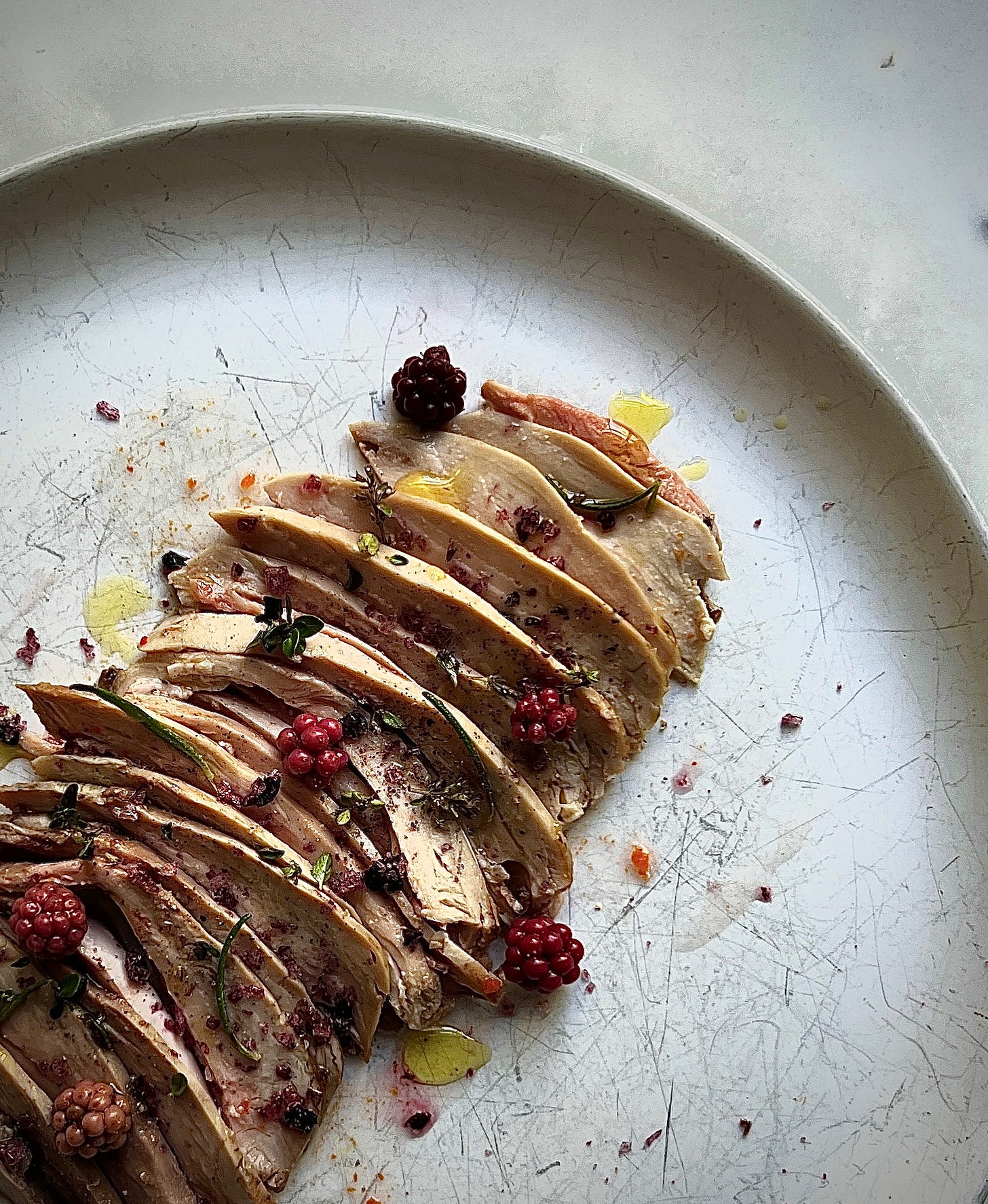A recipe for smoked partridge amongst other things
Wild game season, fat burns on my knuckles and the alchemy of sauce making
With the onset of autumn, first comes grouse in late August, followed soon by the arrival of teal, widgeon, mallard, woodcock, partridge and pheasant.
It’s game season.
Working the sauce section at a two-star Michelin at this time in the year fundamentally involved the doubling of my mise-en-place, as it was my responsibility to pluck, gut1, truss, and cook all manner of little wild birds, joint roe-deer carcasses, bone out wild hare, wrapping their loin fillets within mousses of foie gras and slices of prunes wrapped in the flattened belly meat to make a small neat tube, roasting, rolling it around a pan in foaming butter to crisp up the exterior, then slicing through. Blushed with the blood of the medium-rare hare fillet and the just-set mousse.
Certainly not sous vide.
Heresy lies in that direction.
Time was tight anyway for us every day chasing our tails, and that’s an hour gone already just with the hare prep. On my section for the day is already beef fillet, côte de porc, roe-deer loin, stuffed pig’s trotters, braised for six hours and then filled with sweetbreads, chicken mousse and morels. There are lamb canons cut from the best end, wrapped in their papery skin, Poulet de Bresse, Challans ducks for ‘canard a la presse’ with the elaborate duck press bolted to the end of my workbench for crushing down the bones to extract the blood after carving them into four before service ready for the sauce au sang.
Now with the addition of at least five or six game dishes all needing careful work firstly to remove the feathers without damaging the skin of the birds, flashing the chalumeau once or twice over the nubs of the last few to complete the cleaning. Wishbones taken out carefully, the tip of a thin filleting knife run up, over and along the little arc-shaped bone, fingers pushed into the crop and then pulled out in one quick movement. Any chef worth their salt will insist that all birds are prepared this way, reducing the tearing of the meat when carving the breast from the crown. I still do it, even with a chicken for roasting, as these things bother me, slicing down along the breast bone toward the wing joint, then feeling the blade shudder to a stop as it knocks into the pesky little wishbone.
Take them out. It takes ten seconds and is quite satisfying. Though you won’t be able to pull them apart anymore at the table to make your wish.
Then there are the sauces.
Every day, my line of large gleaming steel and copper pots sat on the Rorgue in front of me at various stages of roasting. Different bones and offcuts, carefully diced vegetables, bits of roasted bacon rind, pluches of herbs, secret spices and sticks (taken from chef’s cupboard that contained his unlabelled jars that were filled with unusual bits and pieces that few of us ever knew what they really were). Aniseed, summer-savory, ground ivy, peppercorns. Vegetables sliced thinly with a mandolin to maximise surface contact with the pan, ensuring the highest degree of caramelisation, then deglazed with vinegar, spirits, and wines, all reduced to a syrupy glaze over many hours. Flavours amplified, colours intensifying, the smell of each pan telling you when you’ve reached that next stage, then with gleamingly clear, deep rich stocks ladled in, some from great buckets of wobbly brown jelly from the fridge, others strained straight from the steaming vast steel pots that seemed never to be empty.
Sauces from stocks that have simmered gently for hours, never boiled as they’ll go cloudy, skimmed of fat and the frothy layer that rises as it settles to cook for the best part of a day. Sticky and deep. Tacky on your fingertips from the sugars and gelatin that you’ve transformed from base ingredients into spoonfuls of shining exquisiteness.
For the wild duck, we’d blend a small saucepan of mallard sauce, with the carved bones of the small duck, carved a la minute, hot off the chopping board, a chunk of the end of a foie gras terrine and a small spoon of cognac. Whizzed in the jug blender. Pure alchemy. The sauce enriched and thickened with the hot roasted carcass and the fatty liver, giving a creaminess and flavour hit you wouldn’t believe. The roasted breast meat peeled of its skin, the meat purple and pink, the legs crisped up in a pan, golden and crunchy, flavoured with pine salt, cooked au confit the previous day. Crisp, soft, salty and flavoured with the green balsam note from the spruce.
The world of professional cookery.
Time that could barely be kept up with. Minutes and hours ticked by unforgivingly, fingers cut, forearms burned. Fat burns from cooking lamb, deep between the skin of the knuckles of the middle two fingers of my right hand that had just healed, splashed again with hot foie gras fat, a great hot spoonful of foaming hot liquid right on top of the cracked skin, the throbbing ache reminding me to pay more attention.That will hurt for another week I’m sure. Knowing my hand will be exposed to fierce heat and open flames for the rest of the day.
Note to self. Be more careful.
(Kitchen Injuries is an essay that sits in my drafts, one that will not be for everyone perhaps, but one that I’ll put up one day).
The partridge.
A good entry-level wild bird, for those of you unused to game cookery. Mildly flavoured, so nothing like grouse so very enjoyable if you don’t like strong flavours. They are decently priced and easily available now, and if you felt so inclined you could roast and hot smoke a pair for lunch.
I’ll tell you how…
Keep reading with a 7-day free trial
Subscribe to A Private Chef to keep reading this post and get 7 days of free access to the full post archives.






